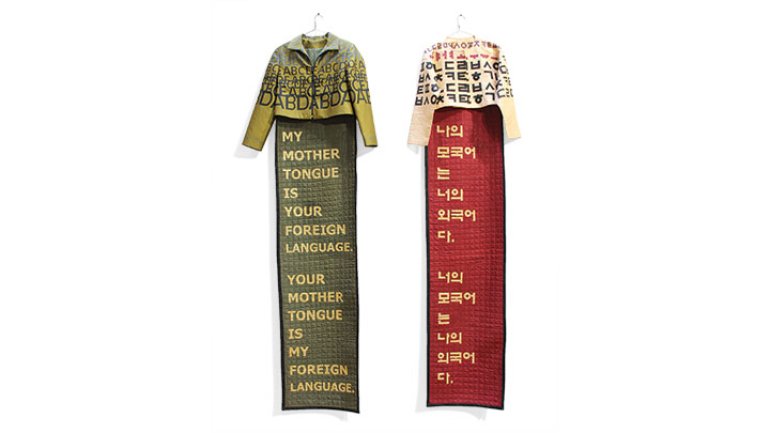Clothed in Culture
Clothed in Culture
How we dress and how we speak tell the world a lot about who we are and where we come from. Steeped in political, religious, and cultural context, clothing and language are expressions of identity that connect us to our peers. If we move to another country, though, all of that context changes. What is it like when cultural unifiers – language and dress – suddenly isolate you?
The George Washington University Museum and the Textile Museum’s exhibition “Stories of Migration: Contemporary Artists Interpret Diaspora” probes the struggles of immigrants and refugees, who are displaced, even scattered, across continents. Through September 4, this show of works by 44 artists uses the enduring tradition of storytelling with textiles to share personal and universal narratives of migration.
Kansas artist Shin-hee Chin shares her experience as a Korean immigrant with her diptych Mother Tongue and Foreign Language. To express the link between speech and self, Chin inscribed words on garments – “intimate objects worn close to the body to clothe and protect,” in the words of curator Lee Talbot. Language barriers pose distinct obstacles for immigrants and refugees, the work illustrates, and “foreign” is a purely relative concept.
The two garments – one a repurposed American jacket, the other a traditional Korean jeogori – contrast in color and language. Yet they are also mirrored translations, reflecting the schisms and similarities that exist between cultures. Whether a language is strange or comfortable, Chin reminds us, is a matter of perspective.




